In the vast expanse of the Arctic, where temperatures can plummet to bone-chilling degrees, there is a fascinating fact that might surprise you: building an igloo is not just a survival skill, but an activity that children find joy in.
This captivating endeavor, filled with tradition and creativity, allows young minds to embrace their inner architect and construct a cozy sanctuary amidst the icy wilderness.
But how does one go about building an igloo? What secrets lie behind its unique construction? In this article, we will explore the art of building an igloo, step by step, unveiling the historical significance and cultural importance of these snowy dwellings.
So, if you’re curious to discover how building an igloo truly becomes child’s play, stay tuned as we embark on this remarkable journey.
Good To Know
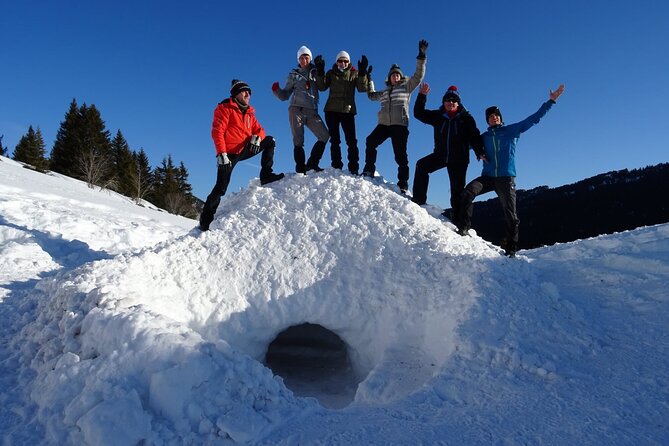
- Igloos are dome-shaped structures made of compacted snow.
- Building an igloo requires specific techniques and knowledge.
- The dome shape of an igloo provides structural stability.
- Igloos can be used for tourism and accommodation, with modern adaptations including heating and lighting.
Selecting the Right Snow
When building an igloo, selecting the right snow is crucial for its stability and durability. Avalanche safety and snow carving techniques are key factors to consider.
The snow used to build an igloo should be compacted and dense, as this type of snow provides better insulation and structural integrity. It’s important to avoid using freshly fallen or powdery snow, as it’s too soft and won’t hold its shape. Instead, look for older, packed snow that has been exposed to wind and cold temperatures, as this snow is firmer and easier to carve.
When carving the snow blocks for the igloo, it’s essential to cut them with precision and ensure that the edges are straight and smooth, allowing for a snug fit when stacking the blocks.
Find more activities and experiences we've covered in Chamonix.
Preparing the Foundation
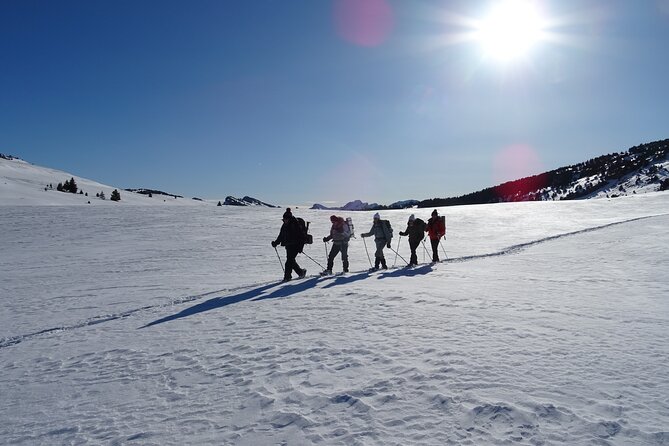
To ensure the stability and longevity of your igloo, it is essential to properly prepare the foundation. The foundation serves as the base upon which the entire structure is built, so it is crucial to get it right. There are several techniques you can utilize when preparing the foundation for your igloo. One common method is to create a circular trench in the snow, about 2 feet deep and slightly wider than the desired size of your igloo. This trench will provide a solid base for the walls to rest upon. Another technique is to compact the snow in the area where the igloo will be built, either by stomping on it or using a compacting tool. This will help ensure that the snow is dense and sturdy, making it easier to construct the igloo walls. By taking the time to properly prepare the foundation, you are setting yourself up for success in building a strong and durable igloo.
| Foundation Preparation Techniques |
|---|
| Create a circular trench |
| Compact the snow |
Constructing the Igloo Walls
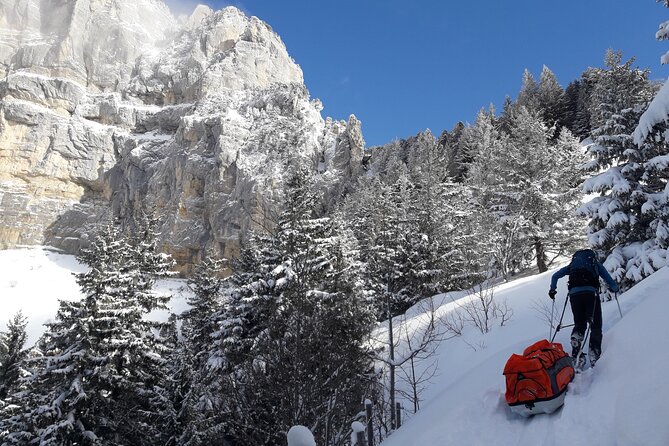
The construction of the igloo walls requires careful attention to detail and a methodical approach.
To ensure insulation and sturdiness, builders use specific techniques. First, they gather blocks of compacted snow, which act as the building material. These blocks are cut in a sloping shape to create a dome-like structure.
The blocks are then carefully stacked in a circular pattern, with each layer slightly overlapping the previous one. This not only provides stability but also helps to distribute the weight evenly. As the walls are built higher, the blocks are angled slightly inward, creating the iconic igloo shape.
To enhance insulation, the walls are often lined with a layer of snow on the inside. This layer acts as a natural insulator, trapping warm air inside and keeping the cold air out.
With these techniques, the igloo walls are constructed to withstand the harsh winter conditions and provide a cozy shelter for its inhabitants.
Creating the Entrance
As the walls of the igloo take shape, attention must now turn to the crucial task of creating the entrance, ensuring both functionality and protection from the elements. Here are some key considerations when creating the entrance:
Choosing the location: The entrance should be strategically placed to maximize shelter from wind and snow. Look for a spot where the natural landscape provides some protection, such as against a hill or large snowdrift.
Safety precautions: It’s important to ensure that the entrance is sturdy and secure. Reinforce the structure around the entrance with additional blocks of snow to prevent collapse. Clear any potential hazards, such as sharp ice or uneven surfaces, to avoid accidents.
Size and shape: The entrance should be large enough to allow easy passage but small enough to retain heat inside the igloo. A slightly curved or tunnel-shaped entrance can help trap warmth and prevent cold air from rushing in.
Windbreak: Construct a small wall or snow barrier just outside the entrance to act as a windbreak. This will help prevent strong gusts from entering the igloo and keep the interior more comfortable.
Building the Dome
With the entrance securely constructed, attention now turns to the captivating process of building the majestic dome of the igloo. This is where the true artistry of igloo construction techniques comes into play. It requires skill, precision, and a deep understanding of winter survival skills.
The dome is built by stacking blocks of compacted snow in a circular pattern, gradually curving inward as it reaches the top. Each block is carefully crafted and positioned to create a strong and stable structure.
The process isn’t only practical but also a testament to human ingenuity and adaptability in harsh winter environments. As the dome takes shape, it becomes a symbol of resilience and a shelter that offers protection against the elements.
- Aiguille Du Midi Cable Car Private Guided Half-Day Tour – Chamonix
- Feel Good Private Photography for Amazing People in Chamonix
- Point of View on the Glaciers of Chamonix by Electric Mountain Bike
- Discovery of a Secret Mountain Pasture by Electric Mountain Bike in Chamonix
- Snowshoe Hiking in Chamonix, a Winter Wonderland
- Private Professional Photoshoot in Chamonix
Reinforcing the Structure
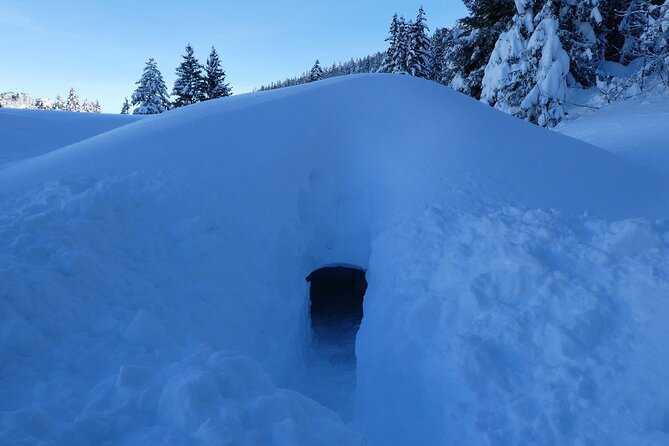
To reinforce the structure of the igloo, careful attention is given to strengthening the walls and ensuring its stability against the harsh winter conditions. Here are four important techniques used in igloo building to reinforce the structure:
Packing the snow: The snow used to build the igloo must be tightly packed to create a strong structure. Builders stomp on the snow or use tools to compress it, ensuring it’s dense and solid.
Incorporating blocks: The walls of the igloo are built by stacking snow blocks in a circular pattern. These blocks are carefully shaped to fit together snugly, providing additional strength and stability to the structure.
Dome formation: The dome shape of the igloo itself contributes to its strength. The curved walls evenly distribute the weight of the snow, preventing collapse under the pressure.
Ventilation hole: A small hole is left at the top of the igloo to allow for proper ventilation. This prevents the buildup of moisture and heat, which can weaken the structure.
Despite these techniques, igloo building still poses challenges. Unpredictable weather conditions, such as strong winds or heavy snowfall, can make it difficult to maintain the integrity of the structure. However, with careful construction and reinforcement, an igloo can withstand the harshest winter conditions.
Finishing Touches and Maintenance
After reinforcing the structure of the igloo, attention turns to the finishing touches and ongoing maintenance to ensure its durability throughout the winter season.
To maintain the integrity of the igloo, it’s important to regularly check for any cracks or weak spots in the walls. These can be patched up using snow or ice blocks.
Plus, snow should be regularly cleared from the entrance to prevent it from melting and causing water damage inside.
As for the finishing touches, igloo decorations can add a touch of charm and personalization to the structure. Simple things like hanging icicles or placing ice sculptures can create a magical ambiance.
It’s important, however, to avoid heavy decorations that could compromise the structural stability of the igloo.
With proper maintenance techniques and thoughtful decorations, your igloo won’t only be a functional shelter but also a winter wonderland.
Common Questions
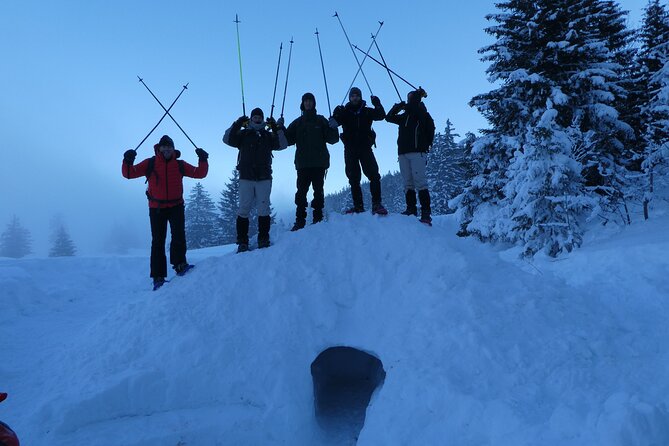
How Long Does It Take to Build an Igloo?
It takes a few hours to build an igloo using techniques for speed and efficiency. By following tips for creating a sturdy and weather-resistant structure, one can enjoy the fun and challenge of building an igloo in no time.
What Materials Are Needed to Build an Igloo?
To build an igloo without snow, you’ll need some essential tools. These include a saw or knife for cutting blocks of ice, a shovel for leveling the ground, and a tarp or canvas for creating a shelter.
Can You Build an Igloo Without Snow?
Yes, it is possible to build an igloo without snow using alternative materials such as ice blocks, foam, or even cardboard. Creative ways to decorate an igloo include using colored lights, fabric, or even painting designs on the walls.
Is It Safe to Sleep in an Igloo Overnight?
Sleeping in an igloo overnight can be safe with proper insulation and survival tips. It’s important to use insulating materials like snow and fur to trap heat, and to have a reliable heat source and ventilation.
Can an Igloo Be Built in Any Location?
An igloo can be built in various locations using specific architecture and construction techniques. They hold cultural significance in different regions, serving as shelters and symbols of survival in harsh environments.
The Sum Up
To sum it up, building an igloo isn’t only a survival skill in the Arctic, but also a cherished pastime for both children and adults. This captivating activity allows individuals to embrace their inner architect and create an enchanting shelter from the icy elements.
By following the step-by-step instructions provided in this article, anyone can learn how to build an igloo that’s both functional and aesthetically pleasing. So, whether you’re looking for an exciting winter project or simply intrigued by the ingenuity of these snowy dwellings, building an igloo truly becomes child’s play.
More Tour Reviews in Chamonix
Looking for something different? Other Chamonix activities we've written about
- Escape Game Outdoor The Walking Dead in Chamonix
- Chamonix Challenges EVG EVJF City Challenge team
- Luxury Private Concierge – Chamonix Bespoke Experience
- 6 Best Tours In Chamonix
- 9 Best Private Driver Services In Chamonix
- 2 Best Guided Tours In Chamonix
- 2 Best Guided Tours In Chamonix
- 2 Best Photography Experiences In Chamonix
- 2 Best Walking Tours In Chamonix
- 3 Best Wine Tours In Chamonix
- 6 Best Bike Tours In Chamonix
- Wine Tour With Private Driver From Chamonix
